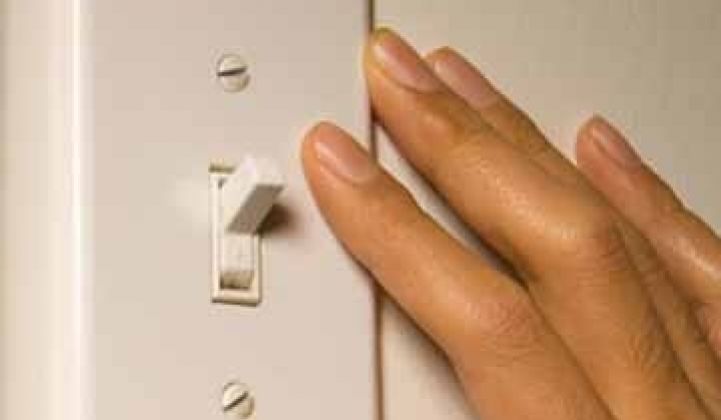Despite all the talk about carbon footprints and the rows of compact fluorescent light bulbs at every hardware store in the U.S., consumers have no idea how much energy they use and don't understand the best ways to reduce consumption, according to a new study.
The shift to educating, and empowering, consumers has been critical in the past among utilities and smart grid startups in the home area network space. But the study shows that most efforts to date have left Americans clueless and simply doing less of their regular behavior, without looking at simple changes that could reap bigger gains in efficiency.
"Of course we should be doing everything we can. But if we're going to do just one or two things, we should focus on the big energy-saving behaviors," said lead author Shahzeen Attari, a postdoctoral fellow at Columbia University's Earth Institute and the university's Center for Research on Environmental Decisions, in a statement. "People are still not aware of what the big savers are."
Nearly 20 percent of approximately 500 study participants listed turning off lights as the best way to save energy. Furthermore, most of the people had no idea how much energy a truck uses in comparison to a train or ship, or how much energy a room air conditioner uses versus central AC. Overall, participants were more willing to somewhat curtail their actions rather than to invest in real efficiency, even if the latter would save more energy and money over the long run.
The results of the study, published in this week's Proceedings of the National Academy of Sciences, were slightly more promising when examining less energy-intensive behaviors. Although people's understanding was generally poorer when the potential for energy or carbon dioxide savings were large, they were more accurate on a smaller scale. For example, most participants were able to guesstimate the savings of swapping out an incandescent with a CFL or adjusting the thermostat in summer.
Those in the study also overrated the savings of many activities, including driving slowly on the highway, recycling glass containers or unplugging chargers when not in use. Even people who described themselves as having a high degree of pro-environmental behavior did not always report engaging in a large number energy-efficient habits and actions.
Although the study had some limitations, including the moderate sample size and a lack of incentives for correct answers, the conclusions are stark. "Many people's concerns about energy are simply not strong enough, relative to their other concerns, to warrant learning about energy conservation," the study authors write.
So for utilities and regulators looking to cut energy consumption through efficiency, how do you get people to care? For one, stop telling people to turn off lights when they leave the room. The conversation must become more sophisticated.
The problem with many of the smaller energy savings actions that are constantly suggested is that they don't offer enough gain for the effort. "We're all very instant gratification animals," said Daniel Moneta from MMB Research, an engineering firm that makes a family of ZigBee smart energy hardware and software for commercial vendors. "From an economic standpoint, we all should have replaced our old bulbs with CFLs. If you do the math, you'd save money."
Instead of just providing actionable information, campaigns need to include information about relative effectiveness of those actionable items. For example, many people thought that line-drying clothes would save more energy than changing their washer settings, according to the study, but the opposite is true. The study also pointed out that people will often make just one or two changes and think they are doing enough, so it might be a better strategy for utilities and government programs to communicate the best two or three actions to get the most bang for the buck.
Public education campaigns and web portals should not only recommend individual actions, but should also strive to paint a picture for people about which actions, both in the home and as consumers, can save the most money and energy.
"If we have that number in front of us all of the time, and we look at it in comparison to our Facebook friends," said Moneta, "we can see that one device next to another device has a better [contextual] meaning. I think that will certainly help to motivate customers."



